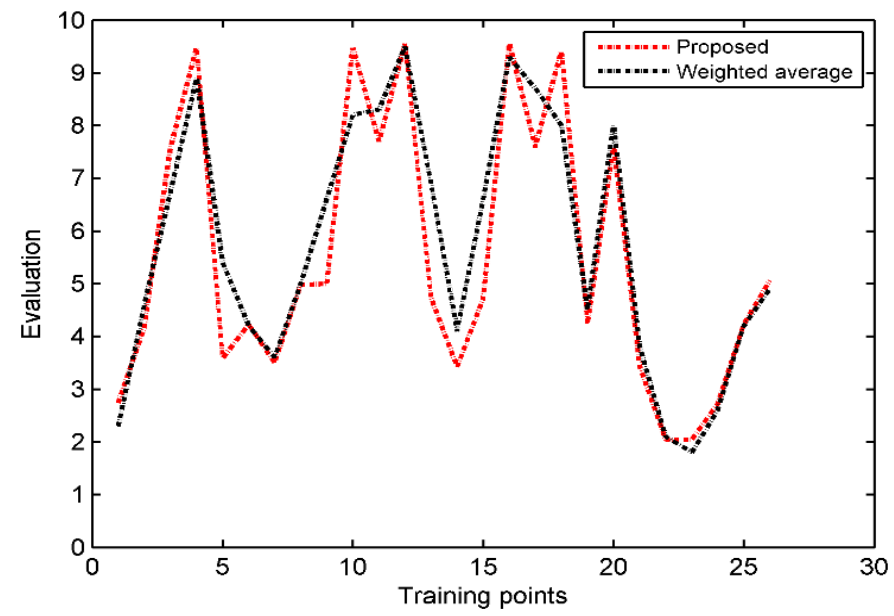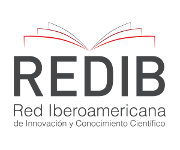
Published
A Novel Global Probabilistic Fuzzy System for Occupational Risk Assessment (GPFSORA)
Un novedoso sistema probabilístico difuso global para la evaluación de riesgos laborales (GPFSORA)
DOI:
https://doi.org/10.15446/ing.investig.104181Keywords:
probabilistic fuzzy system, frequentist probability, total probability theorem (en)sistema probabilístico difuso, probabilidad frecuentista, teorema de probabilidad total (es)
Downloads
Occupational risk assessment is the process of estimating the magnitude of risks that cannot be avoided. Then, the corresponding assessment is carried out, using comparative tables with different evaluation methods. Current risk assessment techniques enable the individual assessment of each potential risk, but there is no method to globally assess potential risks in an organization. The motivation of this research was to develop an objective and quantitative risk assessment system through a diffuse probabilistic model integrating stochastic and non-stochastic uncertainty. To this effect, an empirical collective record was used, whose attribute of interest was the occurrence of different accident types over a period of 52 weeks. Here, each of the collectives represented a linguistic input variable. In the probabilistic fuzzification stage, the frequentist probability of the occurrence of accidents was determined. One of our most important contributions to probabilistic fuzzy systems lies in our classification of language labels based on the linguistic projection of frequentist probabilities via a projection membership function determined by experts. The use of the total probability theorem in the implication stage is also proposed. The output of the system determines the type of risk, its evaluation, and the probability of its occurrence, vital factors to be considered in prevention work. The system’s stages are explicitly described and applied to real data corresponding to construction materials distribution company. One of the relevant conclusions of this research is that the integration of stochastic and imprecise uncertainty allows for a more reliable risk assessment system.
La evaluación de riesgos laborales es el proceso de estimar la magnitud de los riesgos que no se pueden evitar. Luego, se lleva a cabo la evaluación correspondiente, utilizando tablas comparativas con diferentes métodos de evaluación. Las técnicas actuales de evaluación de riesgos permiten la evaluación individual de cada riesgo potencial, pero no hay un método para evaluar globalmente los riesgos potenciales en una organización. La motivación de esta investigación fue desarrollar un sistema objetivo y cuantitativo de evaluación de riesgos a través de un modelo probabilístico difuso que integrara la incertidumbre estocástica y no estocástica. Para ello, se utilizó un registro colectivo empírico, cuyo atributo de interés fue la ocurrencia de diferentes tipos de accidentes durante un período de 52 semanas. Aquí, cada uno de los colectivos representaba una variable de entrada lingüística. En la etapa de difusión probabilística, se determinó la probabilidad frecuentista de la ocurrencia de accidentes. Una de nuestras contribuciones más importantes a los sistemas difusos probabilísticos radica en la clasificación de etiquetas de lenguaje con base en la proyección lingüística de probabilidades frecuentistas a través de una función de membresía de proyección determinada por expertos. También se propone el uso del teorema de probabilidad total en la etapa de implicación. La salida del sistema determina el tipo de riesgo, su evaluación y la probabilidad de su ocurrencia, factores vitales a tener en cuenta en el trabajo de prevención. Las etapas del sistema se describen explícitamente y se aplican a datos reales de una empresa de distribución de materiales de construcción. Una de las conclusiones relevantes de esta investigación es que integrar incertidumbre estocástica e imprecisa permite un sistema de evaluación de riesgos más confiable.
References
Aggarwal, M. (2021). Fuzzy entropy with a general framework. Experts Systems with Applications, 164, 113671. https://doi.org/10.1016/j.eswa.2020.113671
Boyaci, A., and Selim A. (2022). Assessment of occupational health and safety risks in a Turkish public hospital using a two‑stage hesitant fuzzy linguistic approach. Environmental Sci-ence and Pollution Research, 29, 36313–36325. https://doi.org/10.1007/s11356-021-18191-x
De, A., Dasb, S., and Karc, S. (2019) Multiple attribute decision making based on probabilistic interval-valued intuitionistic hesitant fuzzy set and extended TOPSIS method, Journal of Intelligent & Fuzzy Systems, 37, 5229-5248. https://doi.org/10.3233/JIFS-190205
De Ridder, S. Toscani, N., and Vande, D. (2020). Machine-learning_based hybrid random fuzzy uncertainty quantifica-tion for EMC and SI assessment. IEEE Transactions on Elec-tromagnetic Compability, 62(6), 2538-2546. https://doi.org/10.1109/TEMC.2020.2980790
Farhadinia, B. Aickelin, U., and Akbarzadeh, H. (2020). Uncer-tainty measures for probabilistic hesitant fuzzy sets in multiple criteria decision making. International Journal of Intelligent Systems, 35(11), 1646-1679. https://doi.org/10.1002/int.22266
Fattahi, R. Tavakkoli-Moghaddam, R., Khalilzaded, M, Shah-savari-Pour, N., and Soltani, R. (2020). A novel FMEA model based on fuzzy multiple-criteria decision makin methods for risk assessment. Journal of Enterprise Information Manage-ment, 33(5), 881-904. https://doi.org/10.1108/JEIM-09-2019-0282
Gül, M. (2021). A quantitative occupational risk assessment methodology based on Topsis-Sort with its application in aluminum extrusion industry. International Journal of Pure and Applied Sciences, 7(1), 163-172. https://doi.org/10.29132/ijpas.943612
Gül, M., and Celik, E. (2018) Fuzzy rule-based Fine–Kinney risk assessment approach for rail transportation systems. Human and Ecological Risk Assessment: An International Jour-nal, 24(7), 1786-1812. https://doi.org/10.1080/10807039.2017.1422975
Gupta, M. Srivastava, S., Chaudhary, G., and Parra, J. (2020). Voltage regulation using probabilistic and fuzzy controlled dynamic voltage restorer for oil and gas industry. Inter-natinal Journal of Uncertainty, Fuzziness and Knowledge-Based Systems, 28(2), 49-64. https://doi.org/10.1142/ S0218488520400139
Huang, W-J. Li, Y-H., and Xu, K-K. (2019). The general probabil-istic fuzzy set for modelling and its application in EMG robots. Journal of Intelligent & Fuzzy Systems, 37, 2987-2100. https://doi.org/10.3233/JIFS-171121
Jiang, L., and Liao, H. (2021). Network consensus analysis of probabilistic linguistic preference relations for group decision making and its application in urban household waste classi-fication. Journal of Cleaner Production, 278, 122766. https://doi.org/10.1016/j.jclepro.2020.122766
Khan, M. W., Ali, Y., Felice, F. D., and Petrillo, A. (2019). Occu-pational health and safety in construction industry in Paki-stan using modified-SIRA method. Safety Science, 118, 109-118. https://doi.org/10.1016/j.ssci.2019.05.001
Li, H-X., and Liu, Z. (2009). A probabilistic fuzzy logic system: Learning in the stochastic environment with incomplete dy-namics [Conference paper]. 2009 IEEE International Confer-ence on Systems, Man and Cybernetics, San Antonio, TX, USA. DOI: https://doi.org/10.1109/ICSMC.2009.5346199
Liang, P., Hu, J., Li, B., Liu, Y., and Chen, X. (2020). A group decision making with probability linguistic preference rela-tions based on nonlinear optimization model and fuzzy co-operative games. Fuzzy Optimization and Decision Making, 19, 499-528. https://doi.org/10.1007/s10700-020-09329-6
Liang, W., Goh, M., and Wang, Y.-M. (2020). Multi-attribute group decision making method based on prospect theory under hesitant probabilistic fuzzy environment. Computers & Industrial Engineering, 149, 106804. https://doi.org/10.1016/j.cie.2020.106804
Modares, M., and Desch, M. (2021). Comparison between probabilistic and possibilistic approaches for structural uncer-tainty analysis. Practice Periodical on Structural Design and Construction, 26(2), 04020070. https://doi.org/10.1061/(ASCE)SC.1943-5576.0000556
Sozhamadevi, N., Sagaya R., and Sathiyamoorthy, S. (2012). Design and implementation of probabilistic fuzzy log-ic control system [Conference paper]. 2012 International Conference on Emerging Trends in Science, Engineering and Technology (INCOSET), Tiruchirappalli, India. https://doi.org/10.1109/INCOSET.2012.6513959
Sozhamadevi, N., and Sathiyamoorthy, S. (2015). Modeling and control of an unstable system using probabilistic fuzzy inference system. Archives of Control Sciences, 25(3), 377-396. https://doi.org/10.1515/acsc-2015-0025
Tang, J., Liu, X., and Wang, W (2021) A hybrid risk prioritization method based on generalized TODIM and BWM for Fine-Kinney under interval type-2 fuzzy environment. Human and Ecological Risk Assessment: An International Jour-nal, 27(4), 954-979. https://doi.org/10.1080/10807039.2020.1789840
Tian, F., Zhang, M., Zhou, L., Zou, H., Wang, A., and Hao, M. (2018). Qualitative and quantitative differences between common occupational health risk assessment models in typi-cal industries. Journal of Occupational Health, 60, 337-347. https://doi.org/10.1539/joh.2018-0039-OA
Wang, Y., Li, L., and Wang, K. (2021). An online operating performance evaluation approach using probabilistic fuzzy theory for chemical processes with uncertainties. Computers & Chemical Engineering, 144, 107156. https://doi.org/10.1016/j.compchemeng.2020.107156
Xu, Q., Xu, F., Li, F., Zou, H., Zheng, K., and Zhang, M. (2020). Quantitative differences between common occupa-tional health risk assessment models. Journal of Occupation-al Health, 62, e12164. https://doi.org/10.1002/1348-9585.12164
Xue, Z., Zhao, L-P., Zhang, M., and Sun, B-X. (2020). Three-way decisions based on multi-granulation support intuitionistic fuzzy probabilistic rough sets. Journal of Intelligent & Fuzzy Systems, 38, 5013-5031. https://doi.org/10.3233/JIFS-191657
How to Cite
APA
ACM
ACS
ABNT
Chicago
Harvard
IEEE
MLA
Turabian
Vancouver
Download Citation
CrossRef Cited-by
1. Cihangir Gümüştaş, Elif Haktanır Aktaş, Gül Tekin Temur, Ahmet Beşkese. (2025). A Study on the Importance of Factors Effecting the Occupational Safety Performance. Gazi University Journal of Science, 38(4), p.1968. https://doi.org/10.35378/gujs.1501298.
Dimensions
PlumX
Article abstract page views
Downloads
License
Copyright (c) 2024 Roberto Baeza Serrato

This work is licensed under a Creative Commons Attribution 4.0 International License.
The authors or holders of the copyright for each article hereby confer exclusive, limited and free authorization on the Universidad Nacional de Colombia's journal Ingeniería e Investigación concerning the aforementioned article which, once it has been evaluated and approved, will be submitted for publication, in line with the following items:
1. The version which has been corrected according to the evaluators' suggestions will be remitted and it will be made clear whether the aforementioned article is an unedited document regarding which the rights to be authorized are held and total responsibility will be assumed by the authors for the content of the work being submitted to Ingeniería e Investigación, the Universidad Nacional de Colombia and third-parties;
2. The authorization conferred on the journal will come into force from the date on which it is included in the respective volume and issue of Ingeniería e Investigación in the Open Journal Systems and on the journal's main page (https://revistas.unal.edu.co/index.php/ingeinv), as well as in different databases and indices in which the publication is indexed;
3. The authors authorize the Universidad Nacional de Colombia's journal Ingeniería e Investigación to publish the document in whatever required format (printed, digital, electronic or whatsoever known or yet to be discovered form) and authorize Ingeniería e Investigación to include the work in any indices and/or search engines deemed necessary for promoting its diffusion;
4. The authors accept that such authorization is given free of charge and they, therefore, waive any right to receive remuneration from the publication, distribution, public communication and any use whatsoever referred to in the terms of this authorization.


























